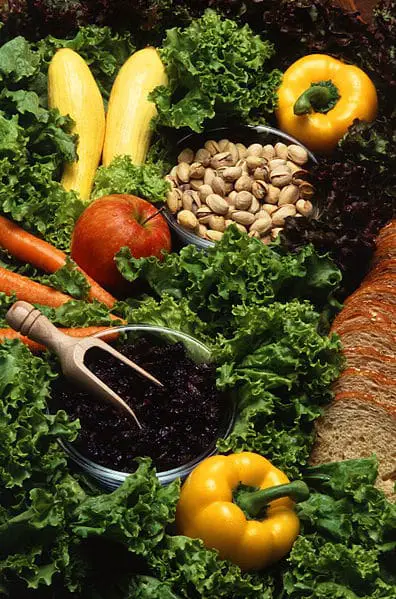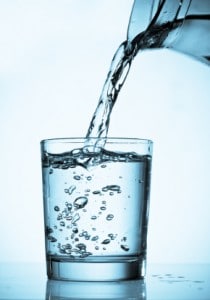 We have a few hundred articles on this website on the topics of exercise and nutrition. Which of those two topics is more important you may ask. Based on both personal and professional experience I say eating healthy is the far greater challenge and the most beneficial to your health.
We have a few hundred articles on this website on the topics of exercise and nutrition. Which of those two topics is more important you may ask. Based on both personal and professional experience I say eating healthy is the far greater challenge and the most beneficial to your health.
Exercise is easy when you think about it. Three to fours hours a week of exercise is doable for most of us. But, eating? Well, eating healthy is a 24/7/365 challenge. And, in the end nutrition is where most individuals fail when it comes to meeting their health goals.
As a physician I have found it far easier to get someone who rarely exercises to become a regular exerciser than it is to get someone to make the necessary nutritional changes to their diets.
Eating healthy requires so much attention and discipline. It requires significant planning. And, eating healthy requires a strategy. You must plan what groceries you will buy, where you buy them, how you will prepare them, and more.
We spend far more time buying food and preparing meals than we do exercising, too. In short, eating healthy requires more effort and time than exercising though it may not be as strenuous.
 The Effects of Poor Eating on Exercise
The Effects of Poor Eating on Exercise
Not eating healthy will sabotage your exercise efforts. Let’s just look at the impact of eating one slice of white bread which has 75 calories as an example.
In terms of calories, you will undo your efforts running a mile which will take 8 minutes if you are in really good fitness by simply downing one slice of bread which only takes a few seconds. Not only that but you will see also an insulin spike and insulin is a fattening hormone.
Not only can you undo your exercise efforts with poor eating, but not eating healthy will impact your ability to properly fuel your body during exercise preventing you from getting the most from your exercise regimen. So poor eating is a double whammy on your exercise program.
Many think they can exercise themselves out of a poor diet. They are wrong. You cannot offset a poor diet with exercise. People who think they can are typically the individuals who join a health club at the beginning of the year and then more or less quit going to the gym by Ground Hog’s day (today as I write this) because they are not seeing weight loss results.
Making Eating Healthy Easier
There are two parts to eating healthy. One, is knowing what to do. In other words, knowing what to eat and what to avoid. And the second, is actually doing it. There are challenges to both.
Everybody is different and I’m not sure there is a one eating plan that will work for everyone. If there were, we surely would have found it by now, but there are underlying principles.
There are features that nearly all successful diets – I prefer nutrition plan – share in common. This is true whether we are talking about high protein diets, low carbohydrate diets, low-fat diets, or low calorie diets.
It’s not so much what you eat as much as it what you do not eat. It’s not what’s in the diet, but what is missing in the diet that seems to matter most. All the diets just mention restrict bad carbohydrates. Bad carbs are those that cause an excessive spike in insulin. Bad carbs are those that are high-glycemic with glycemic indexes above 55.
The Paleo Strategy
One approach is to go the extreme and only eat foods that were available when man first walked this planet. Our early ancestors very simply did not have access to bad carbohydrates. Bad carbohydrates did not come into existence until agriculture came into being about 10,000 years ago. But, their presence really has taken off the past 50 years or so.
 Today we live in an ever fast paced society littered with microwaves, refrigeration, fast foods, processed and package foods, frozen dinners, snacks, and artificial drinks. Some of our grandmas did not have refrigerators. Maybe an ice box at best. Food was bought and cooked fresh. Rarely is that the case today.
Today we live in an ever fast paced society littered with microwaves, refrigeration, fast foods, processed and package foods, frozen dinners, snacks, and artificial drinks. Some of our grandmas did not have refrigerators. Maybe an ice box at best. Food was bought and cooked fresh. Rarely is that the case today.
Our early ancestors or Paleo brethren had only water to drink and the juices of fruits and vegetables. Plastic wrap and containers that are filled with toxins did not exist for our Paleo friends. Neither did preservatives, pesticides, artificial flavoring or colors.
Everything they ate was natural and fresh. And, that’s a good place to start when it comes to healthy eating. Natural and fresh.
9 Other Strategies to Eat Healthy
Here are nine other strategies to make eating healthier easier.
- Shop only the perimeter in grocery store implying that you should only eat foods on the outer perimeter of supermarket as well.
- Avoid eating anything from a bag, box, can, or jar. Practically impossible in today’s world, I know. But, a vast majority of such foods have hidden sugars in them. Here are all the names of sugar.
- Do not eat any food that did not exist when your grandma or great grandma lived assuming they would at least be 110 years old. They had no Twinkies, Pringles, Snickers, frozen pizza or dinners, and much more.
- If it does not fly in the air, swim in the water, run or walk across the ground, fall from a tree, or grow from a plant then do not eat it.
- Avoid the white complex carbohydrates. This means avoid white bread, white potatoes, white pasta, and white rice. They are moderately high glycemic. Sweet potatoes, wheat pasta, brown rice, and breads like rye, sourdough, and pumpernickel are more healthy if you must have these types of carbs in your diet.
- Avoid meats from animals treated with antibiotics and/or hormones. Such tainted or toxic meat will adversely affect your immune system and disrupt your hormone balance. See our article,Gut Microbiome: How it Keeps You Healthy. Eat eggs and meat/poultry from grass-fed animals/poultry. Meat/poultry from corn-fed livestock will increase inflammation in your body.
- Avoid cooking at high temperatures which can lead to AGEs for advance glycation end-products that accelerate the aging process. This means avoid frying, searing, grilling, broiling, and roasting. Instead, poach, steam, stew, or boil your food. See our article, Slow Aging: Change the Way You Cook.
- Prepare some of your meals in advance making meals for several days for the week. This is especially helpful for lunch for those who work where it can be tempting to get fast food or other convenient foods which tend to contain the bad carbohydrates.
- Make water your beverage of choice. Herbal teas, sparkling water are acceptable. And, not to take all the fun out of it, but you can have two cups of coffee a day. One to two servings of red wine a day are permissible, too.
Someone once said, “Simple is something that anyone can do. But, simple does not mean easy. It just means you can do it.” That person also said, “Things that are easy to do are also easy not to do.”
These nutrition strategies are easy and simple. Are they not? Now let’s see you do them!
